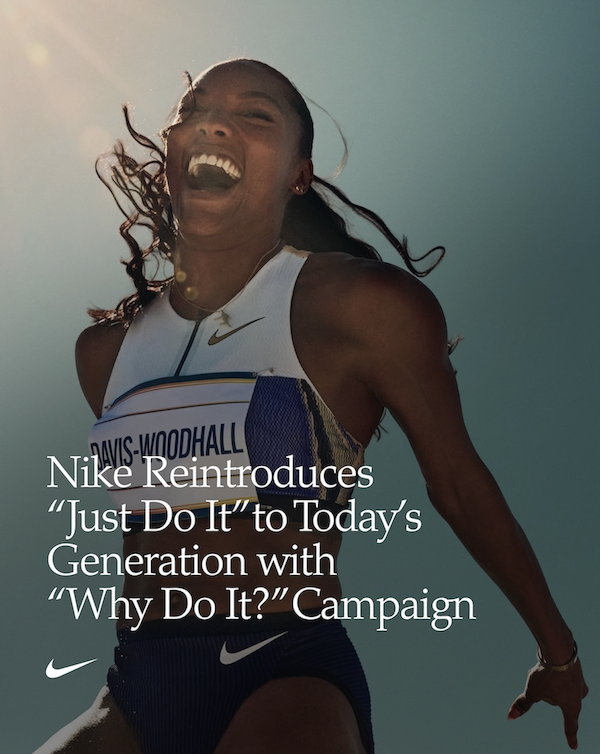Stop making everything match: a guide to brand coherence
Our obsession with making everything match is making brands invisible. We’re drowning in safe, predictable, beige content. When everyone follows the same script of rigid consistency and endless templates, no one stands out.
There’s a better way. It’s called coherence.
Defining the terms: coherence vs. consistency
Coherency is the strategic alignment of a brand’s purpose, messaging, and experience. Unlike rigid consistency, it allows a brand to adapt to new contexts and audiences while remaining true to its core identity.
Brand coherence
Alignment with core values and purpose, even as expressions adapt.
Dynamic; allows for adaptation and evolution.
About what we do; a business-wide principle.
Expressed through flexibility, elasticity, participatory and experiential design.
Brand consistency
Uniformity and repetition of specific brand assets across all channels.
Static; follows strict rules to ensure uniformity.
About what we say; a marketing principle.
Expressed through logo-centric brand identities, templates, and style guides.
A McDonald’s with a double drive-thru in my hometown of Ocala, Florida, is wildly inconsistent with a multi-level, kiosk-heavy location in Midtown Manhattan. But the brand remains perfectly coherent. The brand’s expression changes dramatically, but its core promise of a fast, affordable, and accessible meal carries across markets.
The consistency trap
Brand consistency is a building block for recognition, but when overvalued, it becomes a trap.
Consistency is a symptom of a lack of trust. Brands create rigid, locked-down style guides when they don’t trust their teams to understand the core mission.
It creates cultural irrelevance. Strict, unchanging rules prevent a brand from adapting to cultural shifts. A repetitive brand can be perceived as outdated, especially when uniformity is prioritized over local nuance.
It breeds consumer boredom. Overly consistent brands become monotonous and forgettable. When every communication looks the same, customers learn to tune them out.
It stifles innovation. Talented professionals become unmotivated by filling templates, while other teams fear experimenting.
This trap leads to predictable outcomes: brands that are logo obsessed, stuck in the past, template-heavy, and fail to walk the talk.
The coherency gap
Consistency is about what you say; coherence is about what you do. A brand can be perfectly consistent in its advertising (what it says) but have a terrible product or customer service (what it does). This fundamental disconnect is a failure of coherence. Coherence is a business-wide principle, while consistency can often be just a marketing function.
Thus the most dangerous place for a brand is the coherence gap. This is the gap between the brand’s promise and the customer’s actual experience. A brand can have perfectly consistent visuals, but if the experience doesn’t live up to the promise, the brand is incoherent and will fail.
A coherent brand, by contrast, trusts its people to interpret the brand’s purpose correctly, leading to more creative and authentic outcomes. The goal is participatory, experiential, flexible and elastic.
Case study: coherence in a state of flux
A brand’s identity must grow with its audience. But what does that look like for a brand on the cutting edge?
Take the security company Cyera. Its website pairs hyperwave-hip graphics with citations from Gartner reports.
The visual tension is the point—a brand daring to go beyond the typical enterprise experience. It shows that coherence means being true, even when you’re in flux. For a disruptive security company challenging the status quo, the unpolished, hyperwave-hip aesthetic is the coherence.
Image source: Cyera
How to build a coherent brand: a 4-step guide
1. Find your unchangeable core
What is the one unfakeable belief at the heart of your brand? Nike believes in empowerment; Patagonia believes in environmental activism.
Many brands try to build a tent that’s all things, to everyone, all of the time. A coherent brand does the opposite: it plants a flag on a specific piece of territory and defends it fiercely. This clarity of purpose is the foundation upon which all coherent actions are built.
2. Create a flexible design system
Think building blocks, not templates; guardrails, not rules.
Anchor elements: The visual shorthand for your brand (logo, primary colors) that create instant recognition—but even these can flex when context demands it.
Adaptive elements: The parts that shift freely with context, like photography, layouts, and yes, fonts in emails no one cares about.
Expression principles: Guiding feelings the brand should express (e.g., evoke curiosity, feel approachable, celebrate imperfection). Google’s ever-changing doodles are a perfect example—the logo itself becomes playful and inconsistent.
Prioritize “Does this deliver our core promise?” not “Did you use the right blue?” If your brand promises simplicity, measure whether customers feel that simplicity—period.
3. Build a culture of creative trust
A brand is something we all make, together. This means moving beyond simple empowerment to build a culture of genuine creative trust.
Remove gatekeeping: Give your team the freedom to make creative decisions aligned with the brand’s purpose, rather than locking everything down in templates.
Hunt for “ideas that will get you fired”: As reported in It’s Nice That, WeTransfer’s culture of encouraging unconventional thinking led to campaigns that were “unpredictable but never incoherent.” A coherent brand trusts its people to generate bold ideas, knowing the organization has faith in its people, not just in predictable outcomes.
4. Listen and adapt in real time
A coherent brand doesn’t exist in a vacuum; it’s a living entity in constant conversation with its audience. You'll know flexibility has gone too far when your brand starts feeling like Jekyll and Hyde—playful on Instagram, robotic in customer service. Watch for warning signs: design that obscures what you actually do, teams who can’t articulate what you stand for, or sales and marketing speaking different languages. Customers don’t talk about your brand’s consistency; they talk about how it makes them feel.
Monitor brand sentiment: Pay attention to the emotional response to your brand. Use social listening and feedback channels to understand how your brand is perceived in the wild.
Use real-time insights: Let data and customer feedback inform how your brand’s expression evolves. This allows you to adapt to cultural trends and stay relevant without ever sacrificing your core principles.
Coherence in real time: Nike’s “Just Do It” evolves
Nike’s evolution shows coherence in action. After 36 years of “Just Do It,” they’re now asking “Why Do It?” for a generation that finds trying and failing more daunting than ever.
The tagline, athletes, and visual style all evolve. They meet each generation where they are while staying true to their core belief: when you show up and try, anything is possible.
Image source: Nike
The bottom line
In a saturated market, being ignored is a far greater risk than being inconsistent. We have to remember that customers don’t talk about our brand’s consistency; they talk about how our brand makes them feel.
stop the scroll
say something true on the internet
make meaning not marketing
My personal art explores juxtaposition and surrealism to make people stop and look twice. The same principle applies to branding: you need the courage to create contrast and present an idea in a way that hasn’t been seen before.
This philosophy leads us to treat content as a core product and brand as a total experience. A great collage takes disparate, inconsistent elements and arranges them into a unified whole. Your brand can work the same way. When you create something that makes people feel, you transcend the noise and become the signal they want to tune into.
Ready to dig deeper into the philosophy behind this approach? Read my original manifesto on brand authenticity, Is brand consistency killing your authenticity?



